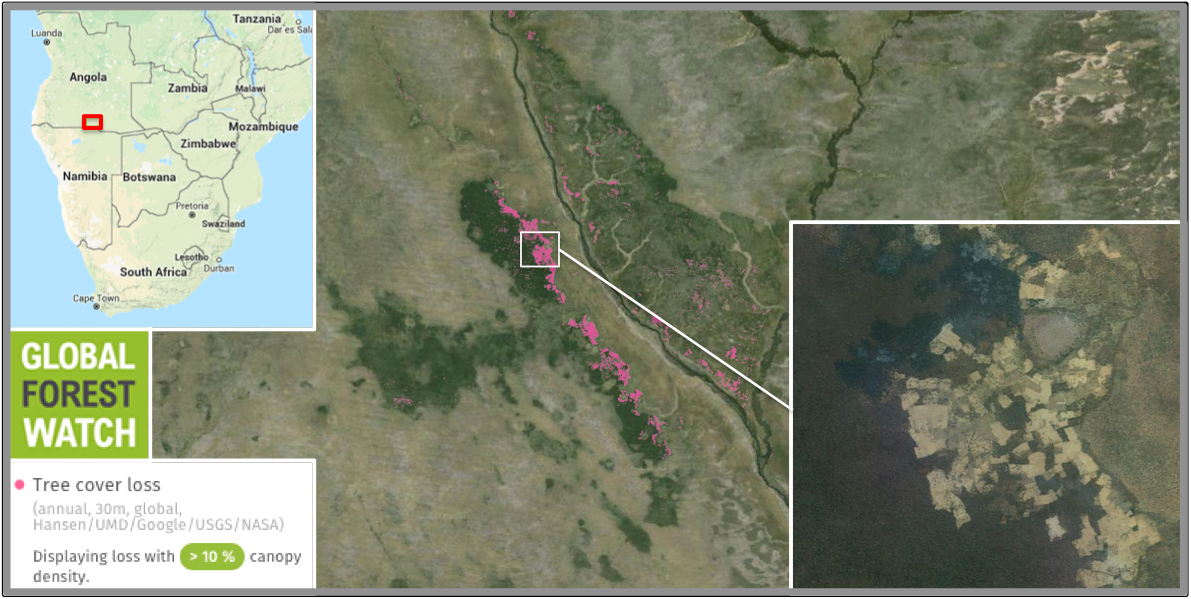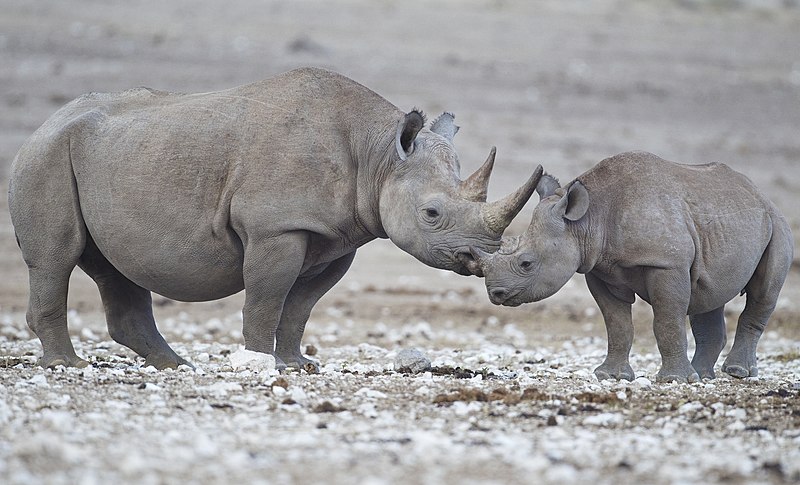- Dry tropical forests cover more than half of sub-Saharan Africa and are home to a many people who live below the poverty line and depend on these forests for their livelihoods, according to researchers.
- In southeastern Angola, islands of dense dry woodland are being cultivated much faster than the surrounding open woodland because they offer better soil for crops. With more people moving into the regions, cultivation rates more than quintupled between 2000 and 2013.
- The researchers worry some areas may be reaching a tipping point, past which soil and habitat could become severely compromised if farming continues apace.
New research out of Angola casts light on the impact of shifting cultivation on dense tropical woodlands. The study, published this week in Mongabay’s open-access journal, Tropical Conservation Science, finds that an increasing demand for agricultural land and a growing population could change the structure and composition of the embattled African country’s remaining southeastern forests.
Dry tropical woodlands are the characteristic vegetation in southeast Angola, where the nutrient content of soil is very low and precipitation is seasonal. This means that condsitions are generally unfavorable for agriculture given highly variable rainfall and poor soils that retain very little water and nutrients. Subsistence farmers in this region often have limited knowledge of modern soil conservation techniques and little or no access to chemical fertilizers, according to the study, and instead overcome these poor agricultural conditions by using a practice called “shifting cultivation.”Shifting cultivation is a type of slash-and-burn agricultural technique that involves removing vegetation by cutting it down and then burning it, which both enriches and clears the land. Cultivation is generally followed by a fallow period during which farmers shift to surrounding areas while vegetation in previously used patches of land gets time to regenerate.
According to the authors of the study, who hail from the University of Hamburg in Germany, the majority of previous research on the ecological impacts of slash-and-burn agriculture has focused on tropical rainforests. They write that it is important to give increased consideration to assessing the impacts of this method on dry tropical forests like the woodlands of southeast Angola.
“Dry tropical forests cover more than 60% of sub-Saharan Africa and are home to a disproportionate number of people below the poverty line, many of whom depend on these woodlands for their livelihoods,” the study says.
As the population in this region grows, the area required for agriculture is also increasing. According to the study, there have been substantial forest cover losses related to agricultural expansion in Angola over the last decade. Satellite images show that cultivation affected around 3 percent of Angola’s dense woodland until 2000. Since then, cultivation has increased exponentially to around 17 percent in 2013.

The researchers point to the Miombo woodlands, which stretch aross southern Africa, as an area reaching a potential tipping point as human activity ramps up.
“Reaching such a tipping point would lead to significant changes in biodiversity and provision of ecosystem services,” the authors write. Because of this, they believe investigating the impact and sustainability of shifting cultivation is increasingly important.
The study took place in southeast Angola’s Cuando Cubango province, 10 kilometers west of the Cubango River. There, the researchers looked at the species composition, biodiversity, and structure of dense woodland – called Baikiaea-Burkea – in comparison with the surrounding and more predominant open woodland. They also analyzed soil samples for texture, pH, conductivity and nutrient levels, and derermined how long it would take for a degraded area to regenerate.
Their results revealed that the species composition and vegetation structure of the dense woodland differed significantly from the surrounding open woodland. The study found that cultivating these lands for longer periods detrimentally affects the species composition and diversity of the regenerating vegetation, as well as the soil’s nutrient content.
The authors underline the importance of regeneration in dense woodland, which is cultivated more often than open woodland.
“In our study area the regeneration of the vegetation is particularly important to the sustainable use and stability of the ecosystem, as shifting cultivation is concentrated in the spatially limited dense woodland,” the authors write.

The study says that the use of dense woodland patches for agriculture has increased substantially within the last decade, evident from satellite data. It warns this heightened activity could result in a reduction in the all-important regeneration time.
“This means that the existence of this unique vegetation type might soon be threatened by expanding agricultural use,” the study states. “As pristine areas decrease, fallows might be reused earlier and fields might be cultivated for longer periods of time.”
But why do Angolan farmers prefer the dense Baikiaea-Burkea woodland to open woodland for growing their crops? There are several reasons for this, according to the study. First, the soil of the dense woodland is more conducive to agriculture because its higher vegetation content releases more nutrients during the slash and burn process used by local farmers to clear land. This, in turn, leads to better yields. Also, in contrast to the open woodlands, the closed canopy of surrounding dense woodland creates a cooler and more humid microclimate.
“These microclimatic conditions preserve moisture, favour plant growth and hinder ground fires,” the authors write. “The absence of high grass coverage, unlike the open woodlands, also impedes the spread of ground fires.” Indeed, the researchers point to the observation that no fires were recorded in their dense woodland study areas between 2001 and 2012.
The researchers worry that the increasing demand for arable land and subsequent prolonged use of agricultural fields could harm species composition and diversity in regenerating fallows, as well as the soil. Eventually, they say, there could be a substantial loss of soil fertility in southeast Angola’s dense woodlands.
Citation:
- Wallenfang, J., Finckh, M., Oldeland, J. and Revermann, R. 2015. Impact of shifting cultivation on dense tropical woodlands in southeast Angola. Tropical Conservation Science Vol.8 (4): 863-892. Available online: www.tropicalconservationscience.org
